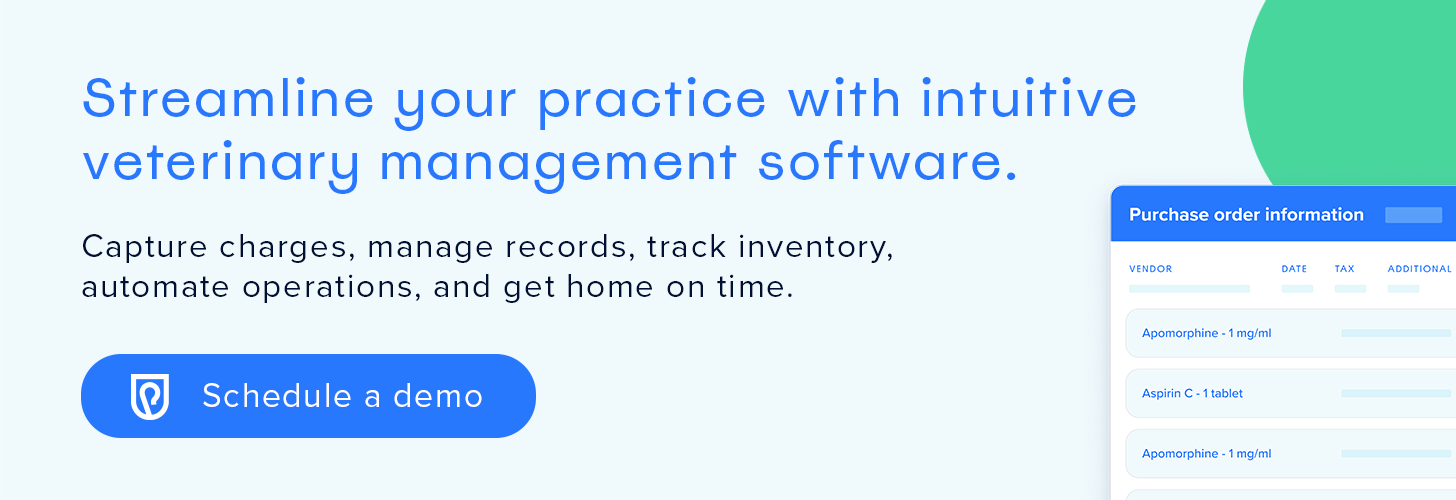A Veterinary Practice Manager’s Guide to Building a Happy Work Culture

It’s no secret that veterinary medicine is a highly stressful field. From heartbreaking euthanasia to nail-biting anesthetic risks, emotions often run high during an average shift. While cuddling puppies and kissing kittens can help alleviate some of the stress, adorable wagging tails only go so far.
Veterinary practice owners and managers should focus on creating a stress-free work environment by building a happy work culture. After all, people are products of their environment. And since they spend a large portion of their waking hours at work, the practice should be a soothing, welcoming place.
Kick your workplace culture into a happier gear by following this guide to success.
#1: Show your team how much you appreciate their efforts
A little appreciation goes a long way, especially when your dedicated team saves lives every day. While that may seem expected—after all, animal superhero is their job—being told you rocked that difficult IV catheter placement or wrangled that spicy kitty like no one else can make your day. However, keep in mind that not every team member wants the same appreciation language. One employee may prefer verbal praise, particularly in front of others, but another would prefer you thank them with a dozen cookies. You can determine your team members’ preferences; it will make a world of difference in your workplace culture with a simple survey.
#2: Listen to your team and follow through on their suggestions
Employees who are heard feel much more valuable and part of the team than those whose suggestions are ignored. Plus, employees who feel they are valued team members are more likely to work harder, contribute more, and have an overall more positive outlook.
You can ensure your employees feel heard by turning their suggestions into actions. During a staff meeting, ask your employees their thoughts on changes in protocols, equipment, scheduling, and other practice operations. They’ll likely have some great ideas on implementing change. They may present problems you had not considered. When you follow your employees’ suggestions, your entire team is more likely to be on board with your new idea. Overall, minimizing tension among team members and fostering a stress-free work environment.
#3: Utilize your team to their fullest potential
Underutilized veterinary professionals become bored and disillusioned. They become much more prone to burnout. Allow your credentialed and experienced team members to use their knowledge and practice their skills to the fullest extent. The biggest issue in many veterinary practices is that veterinarians don’t let their technicians do technician tasks. This undercuts their importance and slows down practice efficiency and productivity. Do not treat your credentialed technicians like glorified kennel assistants. Let them place IV catheters, perform cystocentesis, and suture small lacerations under a veterinarian’s supervision. Depending on your state’s laws, your veterinary technicians can perform a wide range of tasks. These tasks will take a massive weight off your veterinarians’ shoulders, allowing them to do veterinarian-only jobs, such as discussing a diagnosis and prognosis with a client.
Team members motivated and pushed to practice medicine will be determined to do their best. A well-utilized team is a happy team, especially when their professional growth is encouraged with a generous CE allowance.
#4: Provide a robust benefits package
That generous CE allowance should be part of a robust employee benefits package. An employee cannot grow without attending high-quality or specialized conferences. They can be expensive, particularly when you factor in travel. However, a well-rounded benefits package with a CE allowance can be as attractive as a competitive salary. Other benefits you should consider include:
- Health, vision, and dental insurance
- Life insurance
- Retirement plan
- Scrub allowance
- Paid time off
- Pet care discount
- Parental leave
- Flexible work schedule
Ensuring each team member—incoming or current—has a desirable benefits package will go a long way toward making your team happy and satisfied with their workplace.
#5: Create a positive work-life balance
Work-life balance is a huge topic right now with businesses and their employees. Nothing will make your team happier and more dedicated to their place of employment than a positive work-life balance. With such a high burnout rate among veterinary professionals, life outside work is essential for maintaining mental health and overall wellness. Many veterinary professionals are too dedicated to their work, often to their detriment. They fail to take time for themselves when so many animals need their help.
You can encourage a positive work-life balance for your team by:
- Providing flexible start and end times for shifts, particularly for employees with children
- Offering remote work opportunities for employees to work from home and handle virtual communications
- Enforcing lunch and regrouping breaks throughout the day
- Not making a team member feel guilty for calling in sick
- Finding coverage for an employee who cannot come to work
- Ensuring your team uses all their time off
Employees who report being happy at work take ten times fewer sick days than unhappy employees. What really makes your veterinary team happier is lightening their load and streamlining their work processes. An intuitive practice management software with tons of useful features can make daily operations take less time and effort. Schedule a demo of Shepherd Veterinary Software to discover how you can alleviate your team’s workload.
